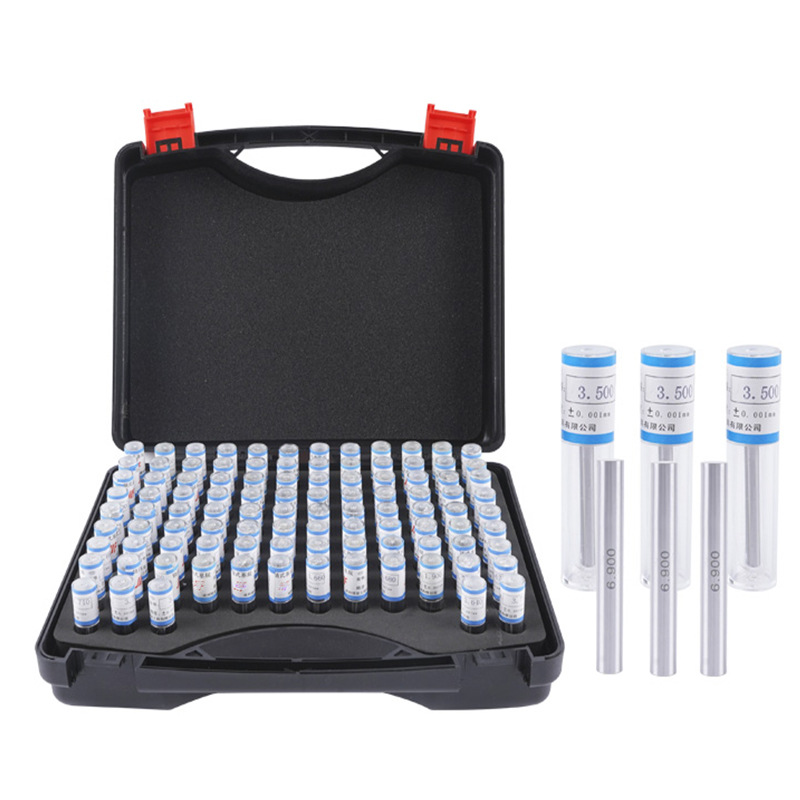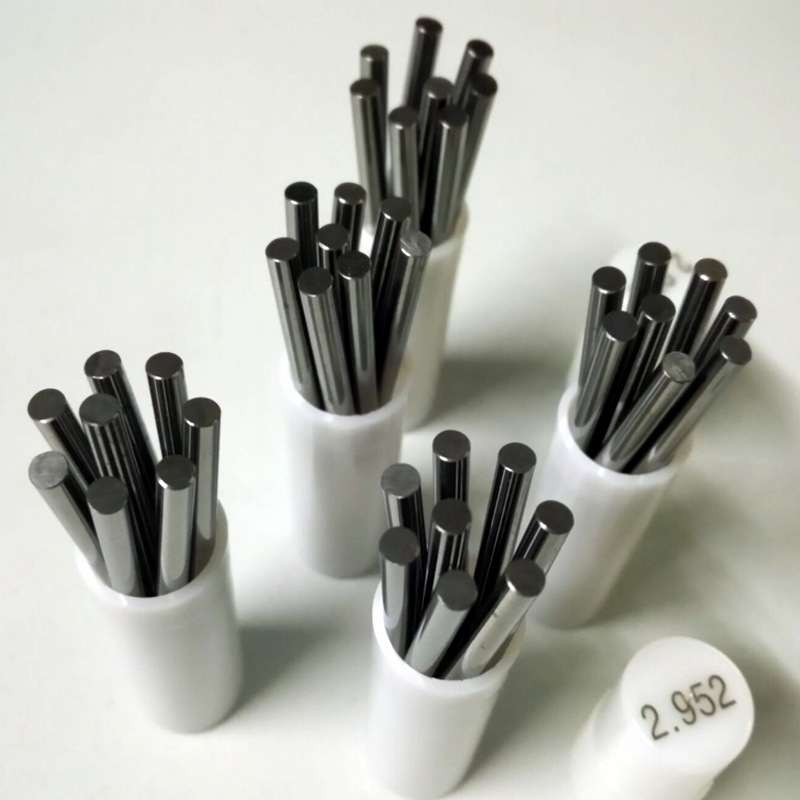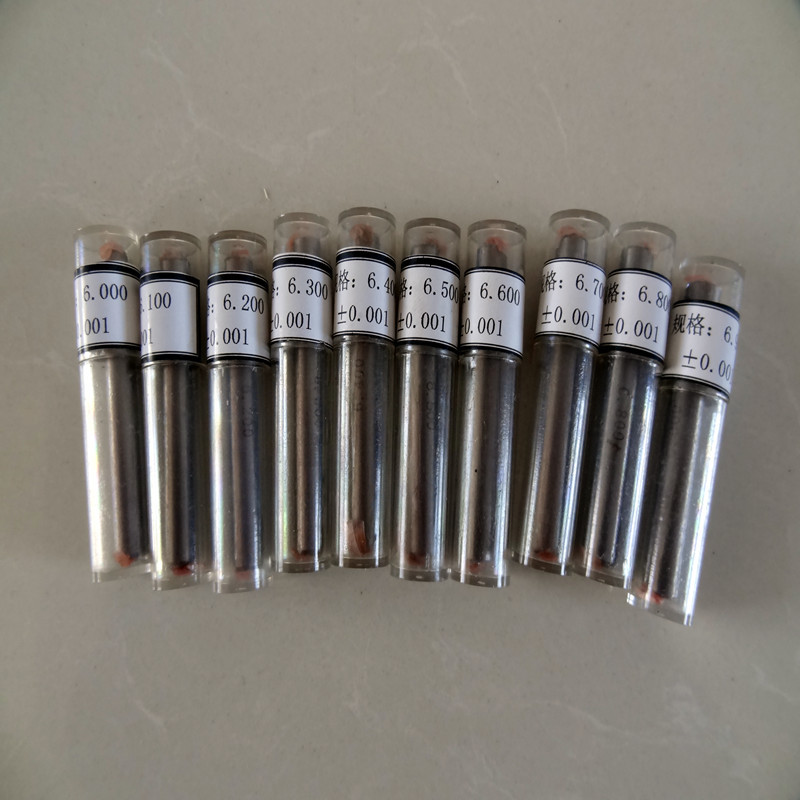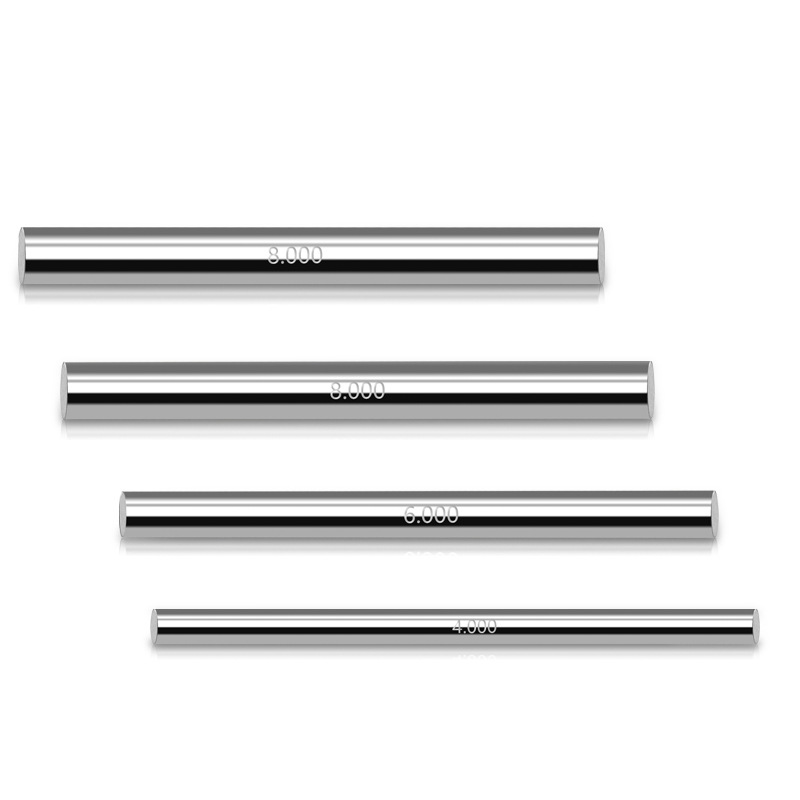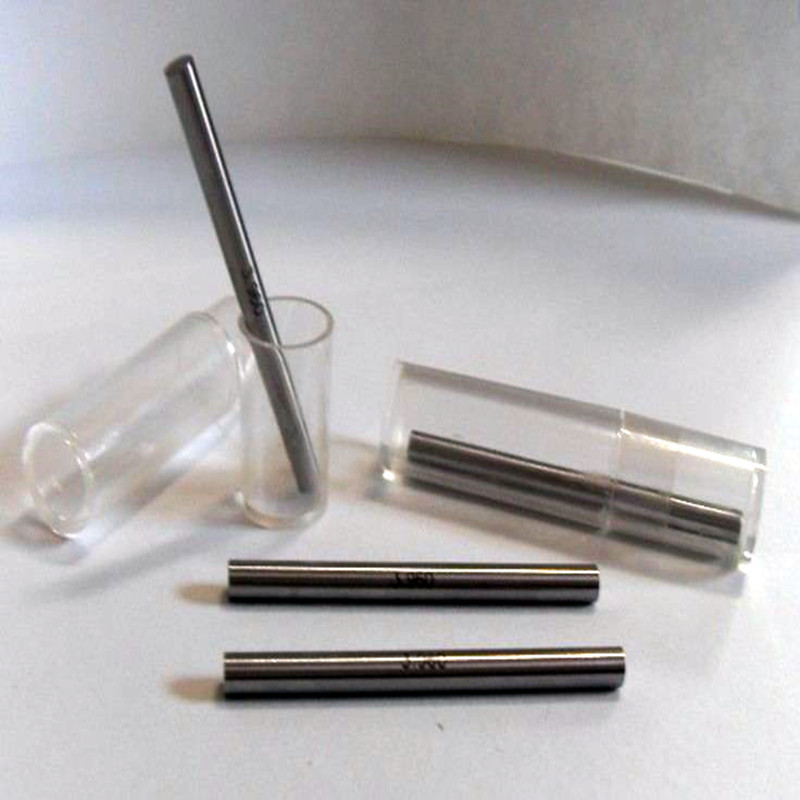Pin Gauge
Product Description
Shaped as a cylinder, the scale is read from the diameter of the cylinder, when measuring, the plug gauge is perpendicular to the cross-section of the round hole, through the round hole. If you can not pass, then replace the smaller diameter plug gauge; if you can pass and the gap is too large, then replace the larger diameter plug gauge. Until the search for the appropriate plug gauge to pass through the round hole, and there is a slight sense of friction (need to feel the judgment), then the inner diameter of the round hole is the diameter of the pin-type plug gauge.
What is a Pin Gauge?
Pin gauges are typically made of hardened steel or other durable materials to resist wear and deformation, ensuring long-term reliability in various manufacturing settings. These gauges come in various standard sizes, allowing users to select the correct pin for the specific hole diameter they need to measure. It’s worth noting that pin gauges are often categorized into two types: Go gauging and No-Go gauging. The Go pin gauge is used to verify that a hole is within the specified tolerance, while the No-Go pin gauge checks whether the hole exceeds the specified limits.
The primary advantage of using a pin gauge lies in its simplicity and accuracy. Unlike calipers or other measuring tools that may introduce human error, pin gauges provide a straightforward pass-fail assessment. When a pin gauge fits snugly into a hole, it confirms the hole size is within tolerance. If it does not fit or goes too deep, it indicates a potential issue that needs addressing.
Pin gauges play a critical role in quality assurance processes in industries such as automotive, aerospace, and manufacturing, where precision is paramount. By employing pin gauges, organizations can maintain high-quality standards, ensure the functional performance of assembled parts, and ultimately improve product reliability.
Pin Gauge Use
In the realm of engineering and manufacturing, precision is paramount. One essential tool that plays a crucial role in achieving this precision is the pin gauge. A pin gauge is a cylindrical tool used to measure the diameter of holes or the width of slots. It is designed to provide accurate and repeatable measurements, making it an indispensable asset for quality control in various industries.
Pin gauges come in various sizes and are typically made from high-quality materials such as stainless steel, ensuring durability and resistance to wear. With a standard tolerance level, these gauges allow users to assess whether a specific dimension falls within acceptable limits. Manufacturers often utilize pin gauges to verify the dimensions of machined parts, ensuring that they meet the required specifications before moving to the next production stage.
The application of a pin gauge is straightforward. To measure a hole's diameter, the user selects the appropriate pin gauge size and inserts it into the hole. If the pin fits snugly without excessive force, it indicates that the diameter is correct. Conversely, if the pin gauge does not fit, further inspection is warranted to determine if the part is within tolerance.
Moreover, pin gauges can also be used for the calibration of other measuring instruments, ensuring that they provide accurate readings. This aspect makes them vital not only in manufacturing but also in laboratory settings where precise measurements are crucial.
Pin Gauge Classes
Pin gauges are categorized primarily into three classes: A, B, and C. Each class serves a unique purpose and adheres to specific tolerances, allowing engineers to select the appropriate gauge for their needs.
Class A pin gauges are manufactured with the highest precision and are ideal for applications requiring tight tolerances. These gauges are commonly used in situations where a high level of accuracy is necessary, such as for calibrating measuring instruments or in quality control processes where validation of component dimensions is critical.
Class B pin gauges offer a balance between accuracy and cost-effectiveness. They are suitable for general measurement tasks and are often utilized on the shop floor where frequent measurements are taken. While they don’t provide the same level of precision as Class A gauges, they are still vital for maintaining consistent quality in production processes.
Class C pin gauges are designed for less demanding applications, often serving as a quick inspection tool or for rough checks. Their tolerances are larger, making them less precise but also more economical. Class C gauges are commonly used in situations where high accuracy is not essential, allowing for a more efficient measurement process without the need for the refined precision of the previous classes.
Pin Gauge Sizes
standard: GB/T1957
makings: GCr15
Unit: mm
|
norm |
norm |
|
0.22-1.50 |
22.05-23.72 |
|
1.51-7.70 |
23.73-24.40 |
|
7.71-12.70 |
25.41-30.00 |
|
12.71-15.30 |
|
|
15.31-17.80 |
|
|
17.81-20.36 |
|
|
20.37-22.04 |
|
On-site pictures
Related PRODUCTS
RELATED NEWS

Flanged Gate Valve: A Reliable Choice for Industrial and Municipal Systems
A flanged gate valve is an essential element in fluid control systems across multiple industries, known for its robust construction and leak-proof connection.

Soft Seal Gate Valve: A Modern Solution for Reliable Pipeline Control
In today’s fast-paced industrial and municipal applications, the importance of reliable valve performance cannot be overstated.
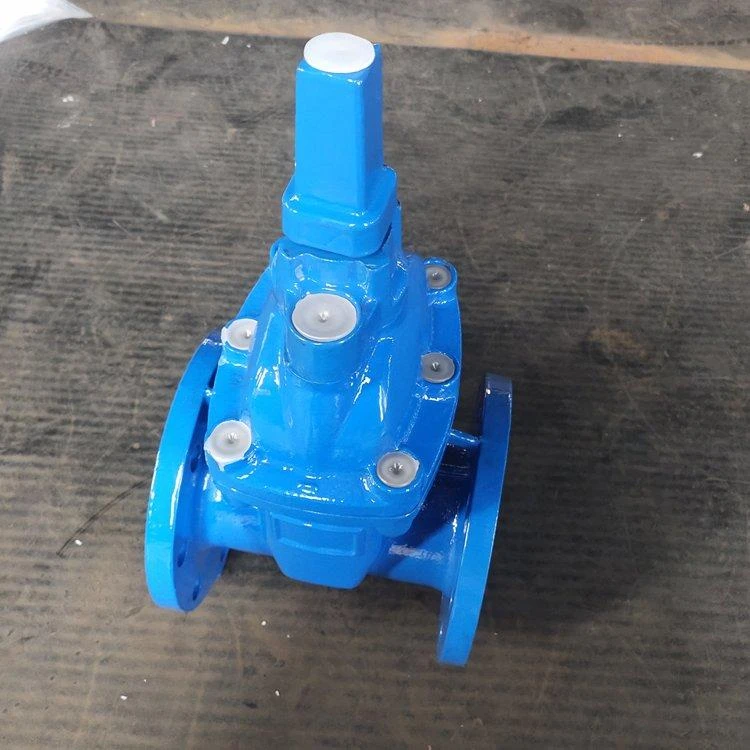
Gate Valve Types: Understanding the Options for Your Pipeline Systems
Gate valves are a critical component in various piping systems, used to start or stop the flow of liquid or gas.


